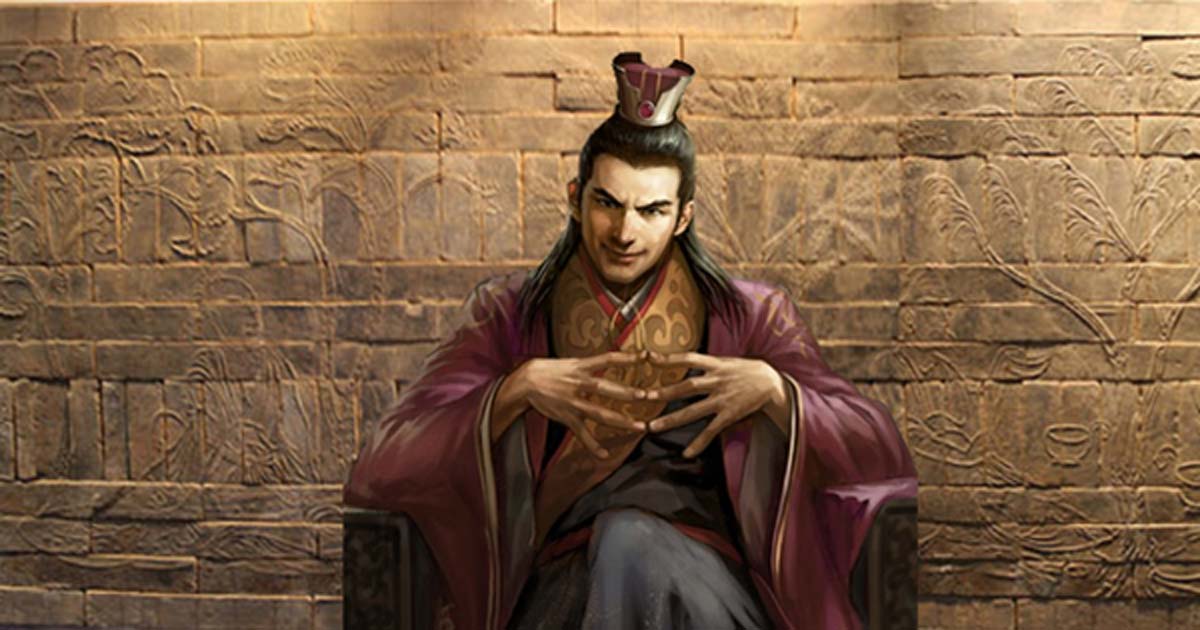The Jin Dynasty: The Sima Clan Fights to Hold China Together
The Jin (晉) Dynasty was an imperial dynasty that ruled China between the 3rd and 5th centuries AD. It was established following the Three Kingdoms period, during which China was fragmented into three powerful states. The Jin Dynasty succeeded in conquering these three kingdoms, thus reuniting China. However, it soon fell into disorder once again.
When the Jin Dynasty lost its northern territories, it marked the beginning of the Sixteen Kingdoms period. The loss of northern China also serves as a division between the Western and Eastern Jin. This dynasty ended when its last emperor was forced to abdicate by one of his generals.

A painted tomb brick from the Western Jin Dynasty. (Public Domain)
The End of Three Kingdoms
Prior to the Jin Dynasty, China was divided between three warring kingdoms – Shu, Wei, and Wu. This era, known as the Three Kingdoms period, came to an end when all three kingdoms were conquered by the Sima clan, who founded the Jin Dynasty.
- Leaf Buds Discovered in Tomb of Early Chinese Emperor May Be the Oldest Example of Fine Tea
- Zheng He: Famous Chinese Explorer Who Added Wealth and Power to the Ming Dynasty
- 6th Century Crown of Chinese Empress Revealed for the First Time in its Full Glory
Although Sima Yan (also known as Emperor Wu of Jin) established the Jin Dynasty, its foundations were laid by his predecessors. His grandfather, Sima Yi, was appointed as regent when Cao Fang ascended the throne of Wei as a minor. The Sima clan’s rise to power continued under Sima Yi’s children, Sima Shi and Sima Zhao. It was during Sima Zhao’s regency that Shu was conquered by Wei.
In 266 AD, Sima Zhao’s son, Sima Yan, forced Cao Huan to abdicate in his favor, thus bringing an end to Wei. Cao Huan was granted the title ‘Prince of Chenliu’ and was treated well by Sima Yan and his successor. Although the Jin Dynasty was thus established, it did not have control over all of China. This was only attained in in 280 AD, when the Three Kingdoms period came to an end. During that year, the Jin Dynasty succeeded in conquering Wu, the last of the Three Kingdoms.
Although Sima Yan was a capable ruler, his successor, Sima Zhong was much less so. The second Jin emperor, who is known also as Emperor Hui of Jin, suffered from a developmental disability which made him unfit to rule. Because of this, there was much infighting amongst the members of the Jin royal family for control over the emperor. This conflict is known as the War of the Eight Princes and it lasted until the emperor’s death in 306 AD.

Sima Yan, Emperor Wu of Jin. (Public Domain)
Jin Dynasty Warriors
One of the consequences of the War of the Eight Princes was the weakening of central authority. In the preceding centuries, nomadic non-Han Chinese tribes had settled in the northern part of China, and these peoples seized the opportunity to revolt against the Jin and to establish their own states. The Uprising of the Five Barbarians began in 304 AD and lasted until 316 AD. The rebels were victorious, which ushered in a period known as the Sixteen Kingdoms. As for the defeated Jin, they fled to the south, where the Eastern Jin was established.

Palace Lady' detail from 'Admonitions of the Instructress to the Palace Ladies' (女史箴图), 344 - 405 AD. (Public Domain)
Apart from the imperial court, the northern aristocracy fled to the south as well. It was a delicate balancing act for the rulers of the Eastern Jin, as they had to ensure the peaceful co-existence between the northern aristocrats and their southern counterparts.
Although the Eastern Jin never quite succeeded in establishing a foothold in the south, they did manage to resist attacks from the north, and were even somewhat successful in their military campaigns against them.
- An Intriguing Empire: The Lasting Impression of the Nomadic Liao Dynasty on Chinese Culture
- The Tomb of Duke Jing of Qi and his 600 Horses
- When Concubines Fought Back: The Plot to Eliminate a Mad and Sadistic Emperor

Tomb figurine of a Jin Dynasty warrior, earthenware - Östasiatiska museet, Stockholm. (CC0)
Downfall
Although the generals of the Eastern Jin contributed to these successes, it was also these military men who were responsible for its downfall. Huan Wen, arguably the most capable general of the Eastern Jin, had Emperor Fei removed and installed a puppet emperor, Emperor Jianwen, in his place. It was his son, Huan Xuan, however, who usurped the throne from Emperor An and established the state of Chu in 403 AD.
This state was short-lived, however, as an uprising by Liu Yu brought it to an end and Emperor An was re-installed. Nevertheless, the emperor was strangled in 419 AD, and his brother, Emperor Gong, was placed on the throne. The emperor was forced to abdicate in favor of Liu Yu in 420 AD, thus ending the Jin Dynasty.

Liu Yu. (Public Domain)
Top Image: Modern representation of Sima Yan, the first emperor of the Jin Dynasty. (CC BY SA) Background: Detail of a moulded-brick mural identified as the “Seven Sages of the Bamboo Grove and Rong Qiqi.” (Gary Lee Todd/CC BY SA 4.0)
By: Wu Mingren
References
Fercility, 2018. The Jin Dynasty. [Online]
Available at: https://www.chinahighlights.com/travelguide/china-history/the-jin-dynasty.htm
The Editors of Encyclopaedia Britannica, 2011. Jin Dynasty. [Online]
Available at: https://www.britannica.com/topic/Jin-dynasty-China-AD-265-316-317-317-420
Theobald, U., 2000. Jin Dynasty 晉 (265-420). [Online]
Available at: http://www.chinaknowledge.de/History/Division/jin.html
TravelChinaGuide, 2018. Jin Dynasty. [Online]
Available at: https://www.travelchinaguide.com/intro/history/jin/
www.learnchinesehistory.com/, 2018. Western Jin Dynasty: Facts, Achievements and More. [Online]
Available at: http://www.learnchinesehistory.com/western-jin-dynasty/
www.learnchinesehistory.com, 2018. Eastern Jin Dynasty: Facts & History. [Online]
Available at: http://www.learnchinesehistory.com/eastern-jin-dynasty/



















